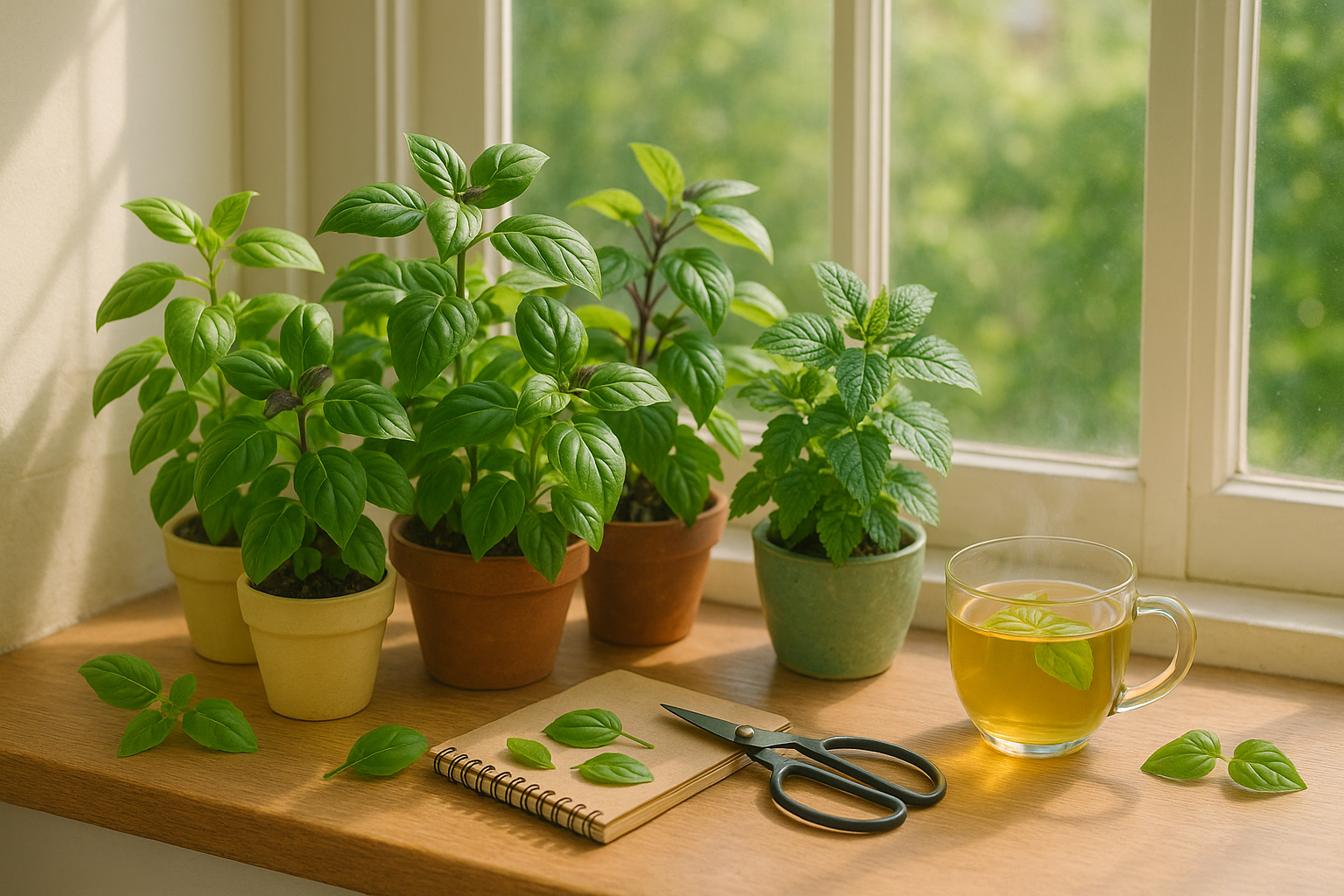Introduction
When it comes to herb gardening, discovering the best basil varieties to grow can open up a world of flavors and aromas right in your kitchen. Basil is one of the most beloved herbs among home cooks and gardeners alike—not just for its signature taste in pesto and salads, but also for the incredible variety it offers. With dozens of unique types, from classic sweet basil to the spicy notes of Thai basil, there’s a basil plant to suit every palate and kitchen garden.
Many gardeners love experimenting with different basil varieties, eager to find the perfect blend for their favorite dishes or simply to enjoy the plant’s beautiful leaves and savory scents on a sunny windowsill. In this article, we’ll explore the top 5 basil varieties that stand out for their flavor, resilience, and ease of care. We’ll also provide straightforward growing tips so anyone—from total beginners to seasoned green thumbs—can enjoy a fresh harvest at home.
Even if you’ve never grown herbs before, rest assured: basil is one of the easiest plants to start with. With just a little sun, regular watering, and the right variety, you’ll reap a lush supply of basil all season long.
Why Grow Your Own Basil?
Growing your own basil offers a host of rewarding benefits, starting with unbeatable flavor and aroma. Fresh-picked basil leaves are incredibly fragrant, adding a burst of freshness to your dishes that store-bought versions just can’t match. You’ll notice the difference when you sprinkle homegrown basil over pasta, blend it into vibrant pesto, or infuse it in homemade teas.
Not only does it enhance meals, but it also saves you money—those little supermarket basil bunches can add up quickly. By nurturing your own basil, you ensure a steady supply at a fraction of the cost.
Health-wise, basil is packed with antioxidants and essential vitamins like K, A, and C, supporting immunity and healthy skin while offering anti-inflammatory benefits in every leaf.
Plus, when you garden at home, you have complete control over the variety and quality. Whether you prefer the classic Genovese, peppery Thai, or the stunning purple-leaved types, you can experiment with flavors and pick only the healthiest, chemical-free leaves.
Beyond cooking, basil is surprisingly versatile: use sprigs for herbal teas to soothe digestion or create charming green bouquets for your kitchen counter. With minimal effort—even a sunny windowsill will do—you can enjoy garden-fresh basil that’s as good for you as it is delicious.
Meet the Top 5 Basil Varieties
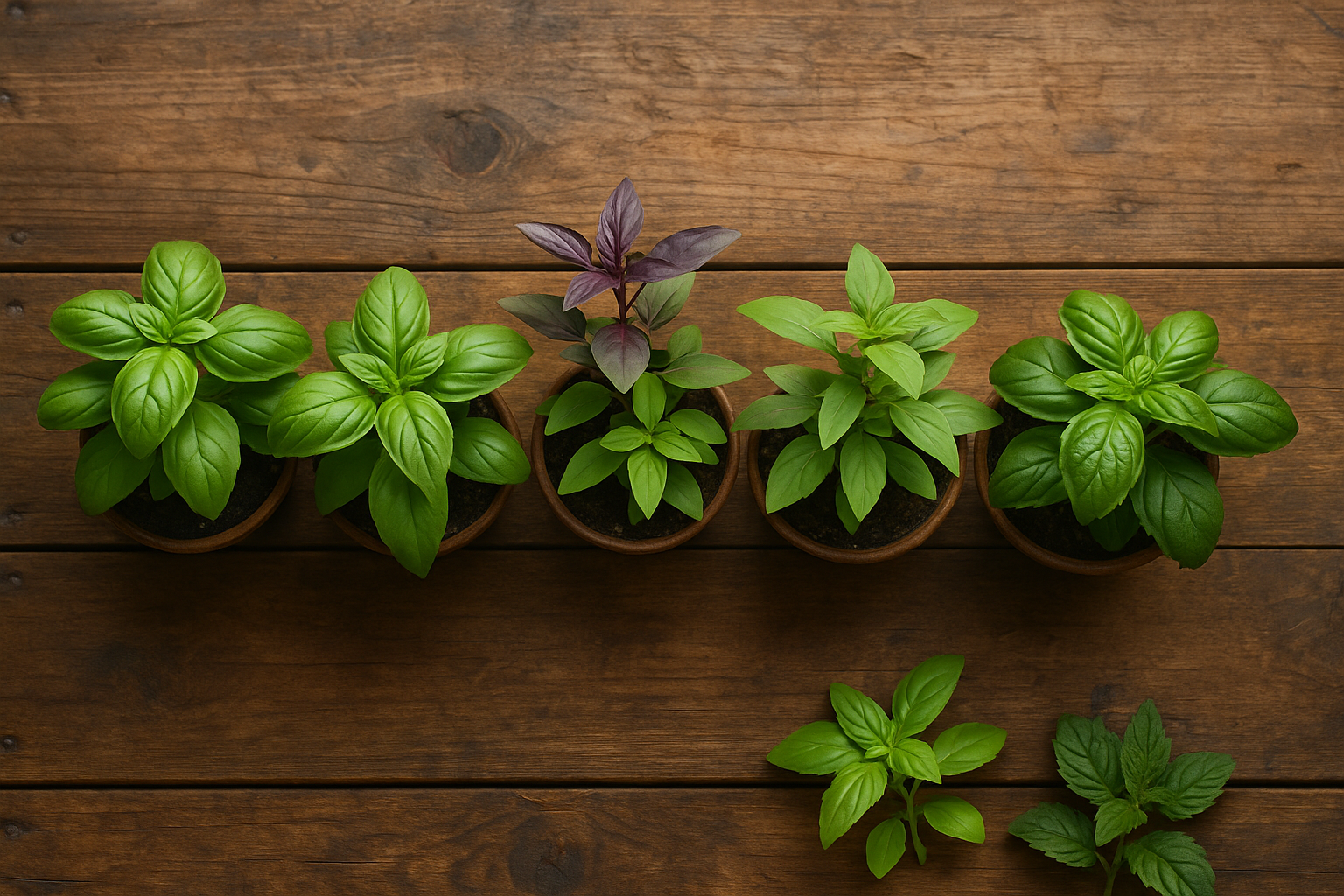
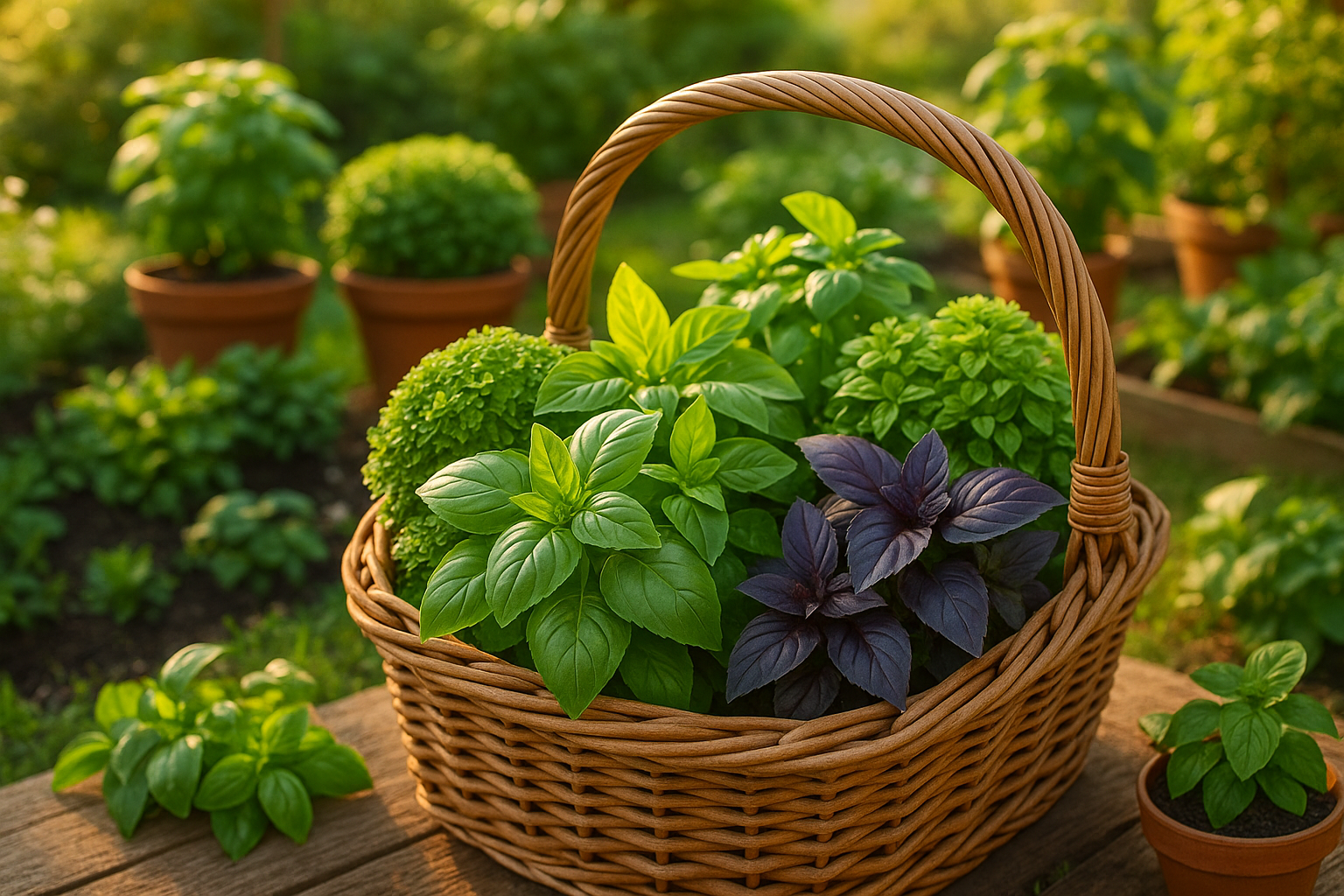
Basil is one of the most versatile herbs you can grow, and knowing the top varieties can elevate both your cooking and gardening. Sweet Basil is the classic choice found in most supermarkets—its fresh, mildly peppery leaves are perfect for making pesto, topping salads, or infusing oils. This variety prefers lots of sunshine and regular pinching to keep it bushy.
Genovese Basil, prized in Italian cuisine, boasts larger, darker leaves and a richer, sweeter taste compared to its sweet basil cousin. Use it for authentic pesto genovese or layer it in Caprese salads. It thrives in warm, well-drained soil and benefits from consistent harvesting.
Thai Basil stands out with its spicy, anise-like flavor and purple stems—essential in Thai curries, stir-fries, and noodle dishes. It tolerates heat better than many basils, making it a solid choice for hotter climates or summer greenhouses.
Lemon Basil lives up to its name, offering a citrusy aroma that complements fish dishes, salad dressings, and iced teas. It’s a bit more delicate in appearance and needs protection from heavy rain and strong winds, but it makes a lively addition to herb gardens or containers.
Finally, Holy Basil (Tulsi) is revered in Indian cooking and Ayurvedic tradition, thanks to its clove-like flavor and medicinal qualities. Unlike the others, Tulsi prefers slightly drier soil and tolerates partial shade, making it a resilient choice for novice gardeners.
Whether you’re drawn to the classic flavors of Sweet or Genovese, the bold kick of Thai, the bright notes of Lemon, or the sacred qualities of Tulsi, experimenting with these five basil types will transform both your cooking and your garden. Just remember to pinch back flowers frequently—no matter the variety—to encourage lush, leafy growth all season long.
Basil Growing Basics
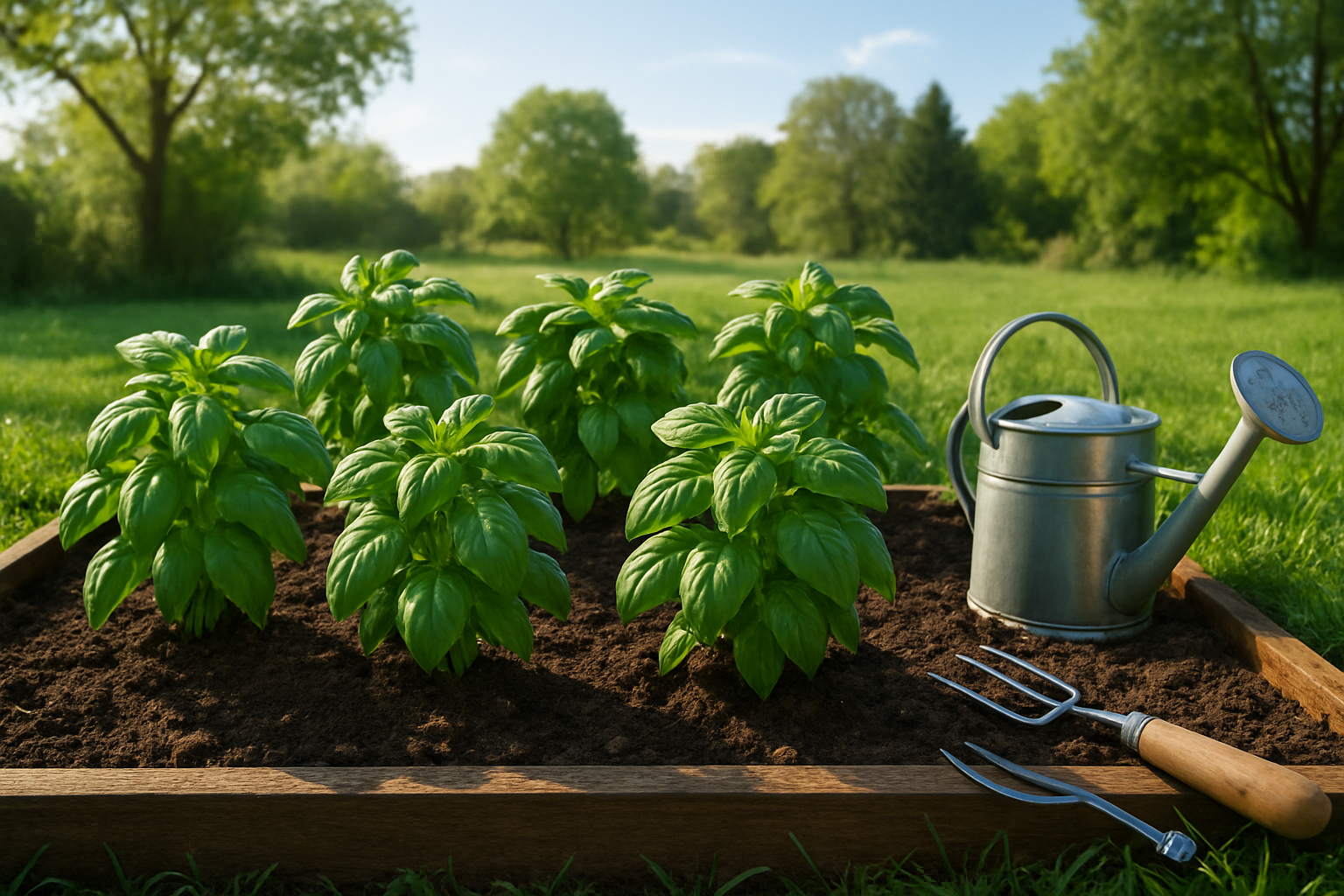
Growing healthy basil starts with setting up the right environment—no matter which variety you choose. Basil loves warmth and thrives in full sun, needing at least six hours of direct sunlight a day. If you’re planting outdoors, choose a spot that gets morning sun and some afternoon shade to avoid leaf scorch in very hot climates.
Use well-drained, nutrient-rich soil; if your garden soil is heavy or clay-like, mix in compost or use a raised bed for better results. In containers, select pots with drainage holes and a high-quality potting mix.
Watering basil requires balance: keep the soil consistently moist but never soggy. The “finger test”—sticking your finger an inch into the soil—can help you judge if it’s time for another drink.
For bushy, vigorous growth, start pinching back the tips when the plants are about six inches tall, removing the top set of leaves above a node to encourage branching. Snipping off flower buds as soon as they appear keeps the plant focused on leaf production.
Basil grows well both in the ground and in pots; containers are ideal for those with limited space or to bring plants indoors when temperatures drop, while in-ground beds usually offer more room for roots to spread.
Watch out for common problems like yellowing leaves (often from overwatering), aphids, or sudden wilting, which may signal fungal diseases. Improve air circulation and avoid watering leaves to prevent these issues.
If your basil seems leggy or pale, add a liquid fertilizer once a month, using only half-strength to avoid burning the roots.
With these basics in mind, your basil—be it sweet, Thai, or lemon—will stay healthy, lush, and ready for all your favorite dishes.
Special Care for Each Basil Variety
Caring for basil takes more than just watering and sunshine—each variety has its own quirks and rewards. Sweet basil and Genovese, two kitchen staples, thrive when you regularly pinch off the top sets of leaves just above a pair of leaf nodes. This encourages bushy growth and keeps plants productive instead of leggy. For good airflow and disease prevention, space plants at least 12 inches apart; crowded basil tends to develop mildew quickly.
Thai basil, with its spicy anise flavor, loves heat even more than other types. It needs a warm, sunny spot with at least 6 hours of direct sunlight daily. To control flowering—which can make leaves bitter—snip flower buds as they form and harvest top leaves frequently.
Lemon basil, fresh and citrusy, prefers consistently moist soil that never dries out completely; mulch helps retain moisture. In the kitchen, try lemon basil with fish, summer salads, or infused in syrups. It bolts quickly in hot weather, so harvest early and often, taking no more than a third of the plant at a time.
Holy basil (Tulsi), renowned in herbal teas, stands out for its drought tolerance—once established, it can handle dry spells—but regular watering still gives you the lushest leaves. Its peppery, clove-like flavor works best for teas, tinctures, and traditional recipes.
For all basils, pick leaves from the top down and just above a pair of leaves; this signals the plant to branch out and produce more. Snip early in the morning, when flavor peaks. To stretch your season, periodically trim a few inches from each stem before they flower. Once frost threatens, potted basils can move indoors to a sunny windowsill, or you can root stem cuttings in water and nurture them into new plants.
If you have the space, stagger your planting by a few weeks to ensure fresh leaves from spring to early fall. Learning to meet each basil variety’s needs pays off in bigger harvests, richer flavors, and resilient plants—plus, you’ll never run out of leaves for all your favorite dishes.
Harvesting, Storing, and Real-World Uses
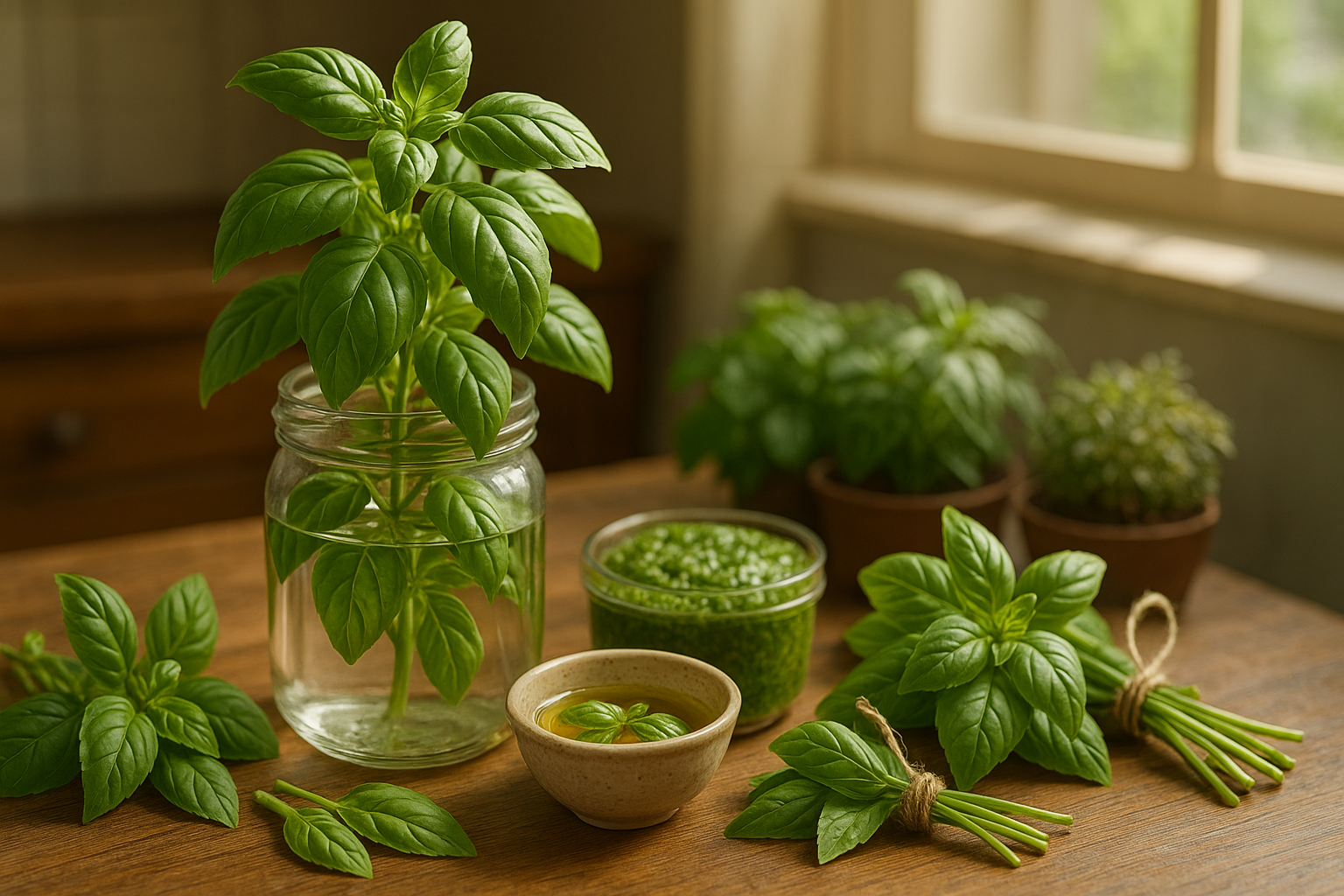
To get the best flavor and encourage your basil plants to keep producing, harvest basil in the morning after the dew has dried but before the sun gets too hot. Pinch or snip stems just above a leaf node to stimulate bushier growth; don’t strip the plant bare—always leave a third of the foliage.
For storage, fresh basil can be kept in a glass of water on your counter for a few days or wrapped gently in a damp paper towel inside a loosely sealed bag in the fridge. To enjoy basil year-round, try freezing whole or chopped leaves in ice cube trays with a bit of olive oil, or dry the leaves in a dark, well-ventilated area and store them in airtight containers.
Making classic pesto is a delicious way to preserve a big harvest—simply blend basil, olive oil, nuts, garlic, and cheese, then freeze in small portions.
In the kitchen, basil shines in countless recipes:
- Add torn leaves to caprese salads
- Blitz into green curries
- Muddle with strawberries for a refreshing drink
- Infuse olive oil for drizzling over roasted veggies
Different varieties, like classic Genovese, purple basil, or spicy Thai basil, all add unique twists to dishes.
For something special, use basil stems and flowers in summer bouquets—they pair beautifully with zinnias and marigolds. Or, steep lemon or cinnamon basil in hot water to make fragrant, calming herbal teas—perfect for a quiet afternoon break.
Experiment and enjoy basil’s abundance beyond the garden!
Conclusion & Quick Start Tips
Growing a variety of basil types at home not only adds fresh, vibrant flavors to your meals but also brings color and fragrance to your kitchen or garden. From sweet Genovese to spicy Thai basil, each variety offers something unique—whether it’s a punchy pesto, a flavorful stir-fry, or a fragrant garnish.
Plus, basil is surprisingly easy to grow, even for beginners, and thrives in containers as well as garden beds. To get started quickly, simply pick up a packet of seeds or a healthy seedling from your local nursery, choose a sunny spot, and water regularly to keep the soil just moist—not soggy.
With longer daylight and warm temperatures, now is the perfect time to experiment with a new basil variety. Pick one that excites your taste buds and plant it today; you’ll be snipping fresh leaves in just a few weeks!
